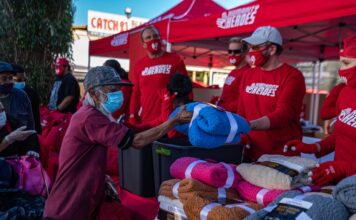In order to be effective at leveraging social media for business, managers must understand social media best practices constantly are evolving. This is especially true as we continue to deal with the unprecedented landscape created by the COVID-19 pandemic. Thankfully Hubspot and Talkwalker have released valuable insights in their new report “2021 Social Media Trends.” We’ve provided some of the updates below.
Remix it up
User-generated content is not a particularly new fad but it has changed quite a bit over the past year. Since getting out and about to create new content has been more difficult during the pandemic, remixing already existing content has become popular. Users can take music or other media and put their own twist on it. High-profile examples can be seen through popular TikTok lip syncs.
“Video and music editing tools and effects available on TikTok and Koji mean that creating remix content is both simple and fun, and that is why these apps have become popular destinations for entertainment amongst Gen-Z audiences worldwide,” Ben Jeffries, chief executive officer at Influencer, said in the report.
One cannot simply…avoid memes
The report suggests moving away from emojis and GIFs. When it comes to shareable media, memes are king. This seems especially true with younger generations. Hubspot and Talkwalker found 55 percent of 13–35-year olds are sharing memes every week. Over the past year, in particular, memes have grown considerably in popularity. It is important for brands and social media managers to leverage this form of communication.
Komal Gupta, head of content marketing and storytelling at Ferns n Petals, believes the “consumer is evolving and their options are ever-growing, hence it is important that a touch of innovation is constantly there in content marketing charters—memes have evolved from simple stickers to GIFs and now video memes. The old school style of satire is the new-age catalyst in marketing.”
Of course, shareable media can take on a life of its own. The report recommends brands pay close attention to how memes are used. Some users participate in “memetic manipulation” and attempt to warp the initial intent of a meme. This often is found in forums that discuss hot-button and political issues and can result in tension and even disinformation that can impact a brand.
Nostalgia marketing: past is prologue
We all spent time thinking of better days before 2020, even if they were not exactly the best of times. Nostalgia marketing was a go-to strategy for marketers during the Great Depression and the more recent Great Recession.
“After 2020, we need to remind our community, how precious a world full of freedom was,” said Aji Aditra Perdana, head of social media and content marketing at Home Credit Indonesia. “With some nostalgia marketing, we can create fun campaigns and look back to the good old days.”
Helping to connect consumers with the past can unplug them from the anxiety of their current struggles. For marketers who can successfully do this, they stand to create a positive emotional connection with their customers. But nostalgia is not simply about feeling good about the past. Research has shown that nostalgia can actually make consumers hopeful for the future and encourage them to open their wallets.
Conversational marketing: talk it out
We know consumers are engaging with and thinking about brands in new ways and many are seeking brands with which they can relate. We’ve already seen this with the rise in popularity of purpose-driven brands. But brands can also do the little things differently. Hubspot and Talkwalker urge brands to utilize conversational marketing when engaging with consumers.
A sleek billboard or YouTube ad that can be clicked through after five seconds may not cut it in 2021. Brands should be engaged in two-way conversations with consumers through chatbots, social media messaging, phone calls, and more.
“In 2021 a focus on original and authentically branded content will dominate the next wave of marketing,” said Ming Johanson, chief executive officer at Mother of Unicorns. “Defined brand voices will ultimately assist in better-developed chatbots and voice search leading to growth in strategic marketing, and a demand for technology to feel more human in its engagement with the end consumer.”
Fun and gaming
With everyone being stuck indoors during the pandemic it’s not surprising the video game community is flourishing. While the Hubspot and Talkwalker report highlighted Warner Bros. Studio’s decision to launch its film trailer for Tenet through the popular game Fortnite, most brands will not have this type of opportunity. However, video games have evolved from an isolated, offline hobby and in many cases now serve as large social hubs. Brands may want to consider interacting with their fans through game streaming platforms like Twitch. In fact, many celebrities already are doing this. Simply put, brands need to live where their consumers do.
“Gaming audiences is still a largely untapped but potentially effective avenue for brands to drive innovative forms of social engagement,” said Eunice Yin Ern, social strategy lead at Digitas. “To succeed, brands should go beyond just integrating products and key messages, and focus on the experience they want to build; that’s unique to their brand essence and core values.”


